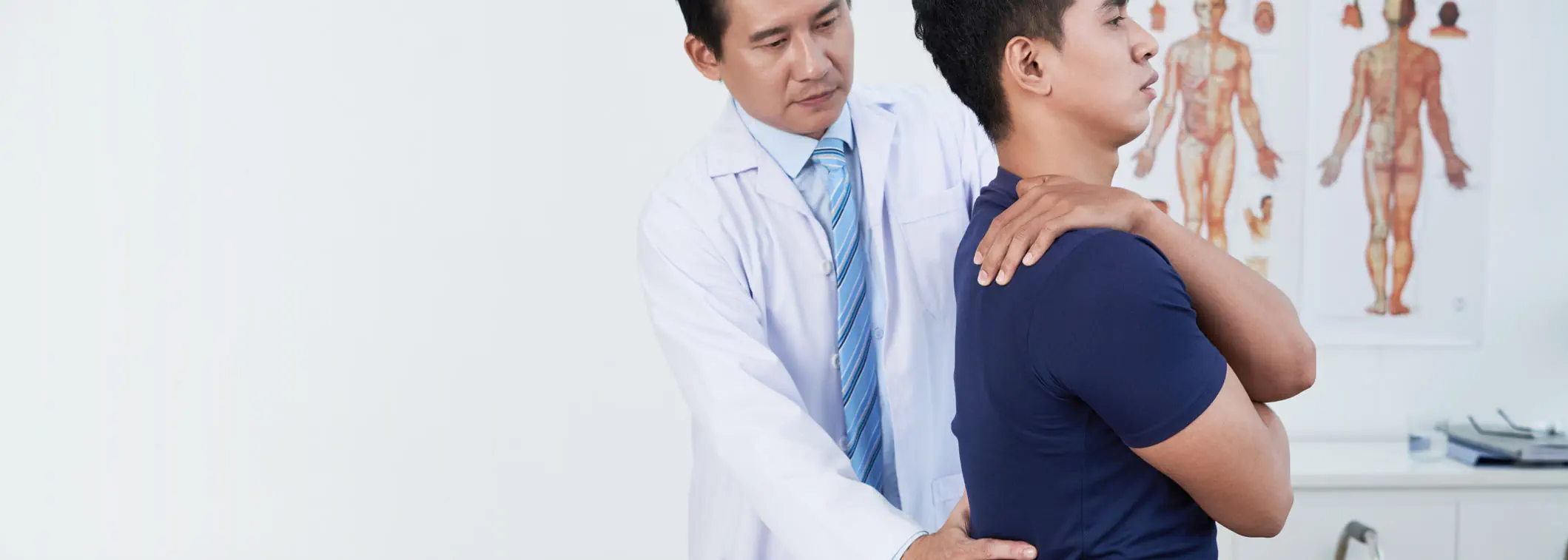Our spine is somewhat curved by nature. However, those with scoliosis have an overly curved spine that could resemble the letters C or S. Scoliosis is the abnormal curvature or twisting of the spine (backbone).

Scoliosis is broadly categorised to structural scoliosis and non-structural scoliosis.
Structural: It affects the spine's structure and is a permanent condition until appropriate treatment is received. It is more commonly occurring (than non-structural) and may involve spinal rotation or side curvature of the spine.
Structural scoliosis can be divided into the following types:
Non-structural: Also known as functional scoliosis, this is usually due to temporary causes and is likely reversible as it may be caused by conditions such as muscle pain or spasms.
Scoliosis symptoms
Notable symptoms include:
Other symptoms include:
Scoliosis diagnosis
Your doctor would first question your general health and symptoms before conducting a thorough physical examination.
Diagnosis is made based on your reported symptoms, physical examination, and investigations.
You may be asked to bend forward to determine if there are particularly prominent areas, as this makes your spine more visible. In the early stages of scoliosis, it may be difficult to notice changes.
Imaging test such as an X-ray is done to determine the angle, shape, direction, and location of the curvature. Magnetic resonance imaging (MRI) scan may be done to rule out spinal cord abnormality.
Scoliosis treatment options
For children
Your child's scoliosis treatment will depend on their age and the severity of their condition. Treatment options include:
For adults
In adults, treatment is mainly aimed at pain relief, as back pain is a common complaint of scoliosis. Treatment options include:
Types of scoliosis braces
There are two types of scoliosis brace:
Effectiveness of scoliosis bracing
Your orthopaedic specialist will determine which brace best suits your condition. It will depend on the locations of curvature on your spine, degree of curvature, number of curves, flexibility of the curve, other medical conditions, and lifestyle. In most cases, braces only work to stop the worsening/progression of spinal curvature. Bracing is suggested as a treatment option when: Cobb angle is 20 to 40 degrees. Cobb angle is 20 to 24 degrees with a progression of more than 5 degrees. To maximise the effectiveness of a scoliosis brace, one must: Ensure that the measurements taken before customising the brace are accurate. Wear it correctly and for the recommended amount of time every day. Get it corrected for revisions if it does not fit perfectly.A well-constructed brace can be worn for 18 hours daily and does not limit daily activities, including exercises and sports.
Make an appointment at Gleneagles Hospitals
Speak to your doctor if you would like to know more about scoliosis and bracing. If you or your child experiences any of the symptoms of scoliosis, get in touch with us to find out more about ourOrthopaedic Servicesat your nearest Gleneagles Hospital.
Gleneagles Hospital works with orthopaedic specialists to assist patients through diagnosis and treatment. The caring and multidisciplinary team of healthcare professionals are available for consultation and to provide the best care.

Wait a minute